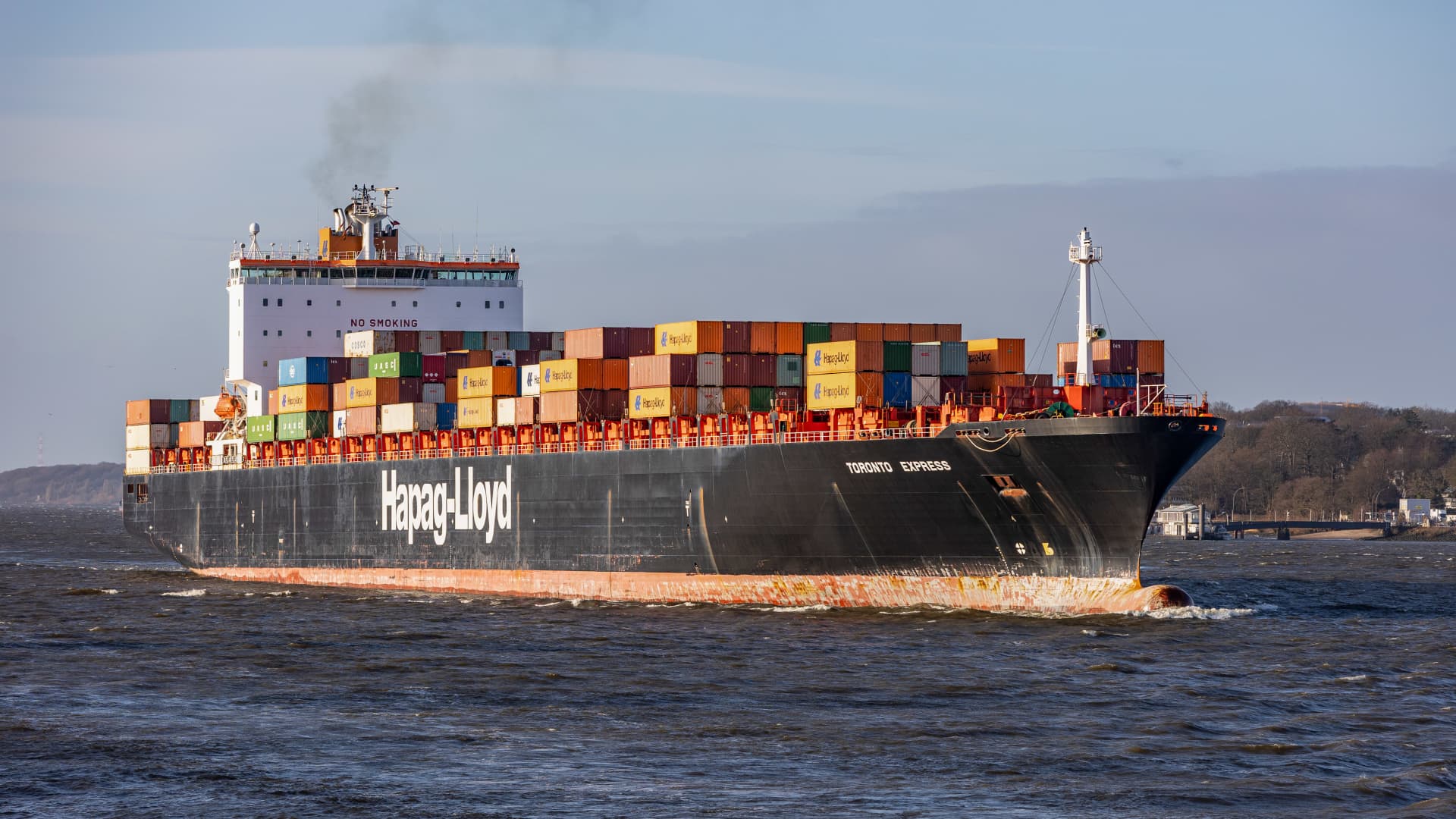The Toronto Express container ship, operated by Hapag-Lloyd AG at the Port of Hamburg in Hamburg, Germany, on Wednesday, Dec. 20, 2023.
Maria Feck | Bloomberg | Getty Images
Rolf Habben Jansen, CEO of Hapag-Lloyd, the world’s fifth-largest ocean carrier, tells CNBC he has an improved view on trade for the rest of 2024. Conversations with clients and other logistics companies have led the shipping CEO to a more optimistic view on demand in the second half of the year than projected in previous forecasts.
“We also see that inventories are depleted in many cases and so far we’ve seen a good recovery after Chinese New Year,” Jansen said. “So we’ve been fairly happy with that.”
The company reported a steep drop in its 2023 net profit this week and slashed its dividend, which led to a stock decline. It was the third-best group profit in company history, albeit significantly lower than 2022, which was fueled by container congestion and high freight rates.
“The last quarter of 23 was difficult because rates were at unsustainable levels,” Jansen said. “I think everybody noticed that. We saw them coming up a bit towards the end of the quarter, and then of course, the Red Sea crisis … which again changed the market.”
Added climate costs from Red Sea diversions
While the Red Sea issues have resulted in a shipping container rate spike, Hapag-Lloyd is forecasting a decrease in its earnings this year as costs increase related to the trade diversions from the Red Sea.
According to SONAR, the price of 40-foot containers started its run-up in the U.S. on Jan 3, ranging from $3,063-$3,763 to a peaked on Feb. 9 from $5,353-$7,329. While rates have now declined, U.S. companies are paying more, with rates from Asia to West Coast ports up 155% year-to-date; Asia to East Coast up 129% year-to-date; and Asia to the Gulf Coast up 71.2% year-to-date.
Attacks by the Houthis on commercial shipping interests in the Red Sea continue, with a tanker attacked in the Red Sea Friday while underway…
Read the full article here

Leave a Reply